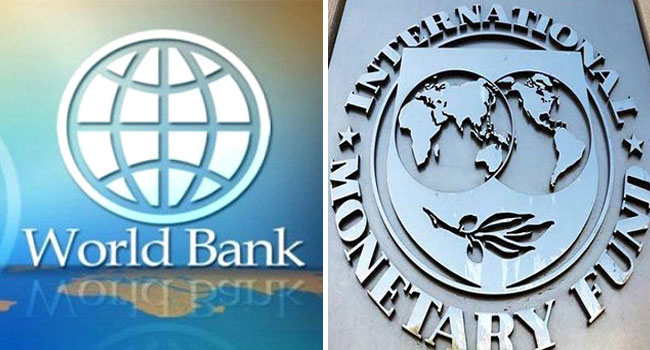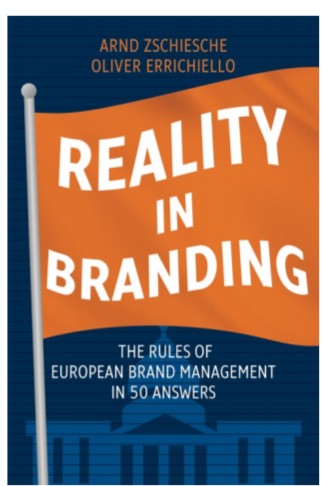BY ZION RUFUS
It is no longer news that as brands are looking to in-source different elements of their marketing such as digital advertising, creative or design and media buying, top creatives across the globe have also been spurred to move from the agency side to the clients’ side.
The global trend of in-housing and new top CCO appointments across the globe have revealed that this move helps brands to cut agency fees and allow clients to more efficiently combine creativity and business under one roof. However, this in-house shift attracts top creatives to the client side roles in search of creative freedom, client access and work-life balance which is mostly unavailable at agencies.
To better understand how in-housing is impacting ad agencies, why the creatives and chief creative officers are transitioning to the client side, and how the agencies are safeguarding against the in-house trend, MARKETING EDGE talked to the President of the Association of Advertising Agencies in Nigeria (AAAN) and CEO X3M Ideas, Steve Babaeko; Head of Creative Services, Guaranty Trust Bank, Orighomisan Ogbebor; Franklin Ozekhome, Strategy and Planning Director at Insight Publicis; and Chief Marketing Officer, BB Buzz and Former SO&U Head of Brand Management, Yomi Olaniwun. These four industry veterans have shared their opinions and insight with MARKETING EDGE.
Client in-housing has always been a factor for agencies, but the availability of ad tech and martech, the rise of automation and data management requirements have added new pressures. Key researches have revealed that ad agencies, marketing agencies and digital agencies see the in-house trend as a key challenge as a result of the poaching of creatives by the brands to fill up the new positions. So as marketers take on more of their own advertising needs, they mostly end up doing so by hiring people away from ad agencies.
A recent report from the World Federation of Advertisers (WFA) and The Observatory International revealed that the coronavirus pandemic has accelerated the move to bring creative operations in-house, with creative in-housing at 57% among multinational companies. The statistics showed a decline for ad agencies.
According to the report’s findings, growth in digital opportunities led to a rise in in-house agencies, with 74% being established in the last five years. In just the past year, businesses like Nestlé, Hertz and Anheuser-Busch have jumped on the trend.
Approximately 37% of creative output now comes from in-house teams; however, brands with in-housing departments are still open to ad agencies input, with 40% allowing them to pitch against each other for projects.
Why are brands taking more marketing and creative functions in-house?
Brand custodians and heads of marketing tend to connect very strongly with planners and creatives on the agency side the most because they can hold on to something tangible when discussing briefs, solutioning, campaign ideas and tactics for executions, says Franklin Ozekhome, Strategy and Planning Director at Insight Publicis.
“Working with the in- house creatives help to shortcut the process. Secondly, the organization now has an always-on access to the chief creative officer talent who understands the problems the marketer needs to resolve, and can quickly develop integrated solutions with the team and execute them without any distractions of other briefs, accounts or campaigns. Thirdly, the CCO can help steer creativity for the entire organization and not just for a product or portfolio of brands,” he told MARKETING EDGE in a chat.
Global brands like P&G, AB InBev, among others have adopted the hybrid approach to in-housing by continuing to use agencies for some services and building up other capabilities in-house. P&G shifted its creative and production in-house; its brand, Secret, now has its own agency, which creates and produces ads for a tenth of the usual cost and in one month as opposed to the five month period.
Head of Creative Services, Guaranty Trust Bank, Orighomisan Ogbebor thinks it is a good thing that today’s businesses are very receptive to having creative thinkers and innovators as key members of staff.
“To begin with, I believe we all agree that creativity brings new solutions to difficult problems. Over the years, creative thinkers have revolutionized technology, business, lifestyle and much more with their innovative solutions that are borne by the power of imagination that most creative thinkers possess and have developed over a long period. This means, a fresh angle can always be implemented or infused into business projects or whatever problem they intend to solve. Today’s business world demands and rewards unconventional thinking and ideas, the world needs more, not less,” he said.
In 2019, P&G chief brand officer Marc Pritchard disclosed that the company now does 30% of its media buying in-house as part of an overall agency reinvention and discerning between what work can be done in-house versus what work an agency or any kind of supplier should do.
Orighomisan Ogbebor believes that brand marketers are pursuing in-house Creative and innovations teams for predictable reasons, such as cost efficiencies, better integration and better brand knowledge. According to Ogbebor, by hiring creative people, companies across industries can find simple, usable and highly innovative solutions to difficult problems that their target consumers encounter, hence the surge in demand for these creative officers.
In 2018, brewery giant Anheuser-Busch created its in-house agency, known as DraftLine, which is focused on gathering consumer data to drive not only the team’s creative output but the work of the various agencies working on A-B InBev’s brands.
“The traditional agency model does not allow for real-time discovery (trends and insights), always-on engagement (communications) across platforms, sales and conversion (creative commerce), and monitoring and control (evaluation). Marketers are losing sleep searching for newer ways of circumnavigating this seemingly endless loop of ideation to development to management and execution. They want to be able to respond real-time to consumers and vice-versa as events occur, especially if they are to borrow the design thinking mindset of startups that focus on product development, prototyping, testing, iteration and launch to market at speed,” Franklin Ozekhome noted.
Also in 2019 Walmart decided to take its digital advertising in-house and away from WPP’s agency, Triad; Verizon set up an in-house creative agency in 2017; Unilever launched its digital content creative arm called U-Studio in 2016 which now operates in 18 countries.
Why are the Creatives moving to the client side?
“The creative mind is a restless spirit. There’s nothing like seeing your work come alive on canvas and people loving, appreciating and buying it, says Franklin Ozekhome. “The works of agencies only come to the limelight if ideas, creatives and budgets are approved. Working in-house affords the CCO direct access and information to what’s going on at the marketing end, and applies creativity to bring these ideas to fruition while also understanding the issues pertaining to sales, profitability and revenue.”
“Secondly, it is widely known that the remuneration on the client side pays better and the focus of effort is streamlined to a particular product, brand or service. There is laser focus on creatives, creativity and creative commerce,” Ozekhome opined.
CMO, BB Buzz and Former SO&U Head of Brand Management, Yomi Olaniwun, is of the opinion that this transition is fuelled by opportunity and financial gain.
His words: “This is a twofold situation. First, I would say that most times, the financial appeal on the client side is much more; you get paid much more for your efforts and creativity. Secondly, when these creatives, creative officers and directors get to the client side, there is more opportunity for training, networking, as well as accelerated career growth. Most ad agencies don’t really have a culture for training their best hands.”
“Clients can easily send you to some of the best schools across the world to improve your skills and broaden your knowledge, most agencies don’t do that. These creatives would want to join a team where their future is guaranteed of success, or an assurance of learning from the best in the world in terms of training and networking; most brands that poach creative minds from agencies end up making them better in terms of travelling to new places, expanding their networks, and getting better opportunities.”
How are agencies safeguarding against the in-housing trend?
The rising frustration for ad agencies that are rapidly losing their talents to marketers and clients who poach their best hands have spurred the Association of Advertising Agencies in Nigeria to put measures in place to curb the trend.
AAAN President and CEO X3M Ideas, Steve Babaeko told MARKETING EDGE: “Now we are telling our members to do the contract clauses with their talents so that they cannot just wake up one day and go to a client who you have supported or probably currently working for.”
Babaeko explained: “I know that few of our members too have been recruited from the client side, but you know how it is, when a dog bites a man, it is no news, but when a man bites a dog, it becomes news. When we see a situation where clients who are supposed to be able to find better talents now start coming to our members to even poach from some of their own agencies; I have seen situations lately where the clients work with an agency and they poach from that agency, which is horrible as a matter of fact. Meanwhile, it also shows that the AAAN is where the best brains are, because if the clients cannot find any other place to poach, it means that we have the best people. It still speaks a lot on the kind of training that we give our people; it confers some kind of brain power on the AAAN and on our member agencies.







Comment
No comments found.